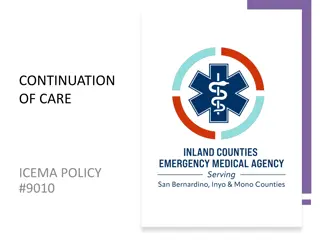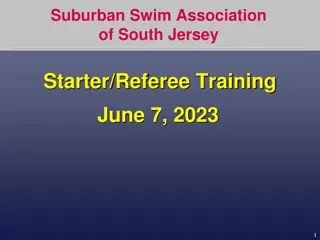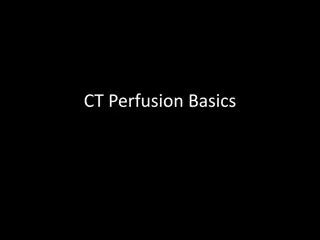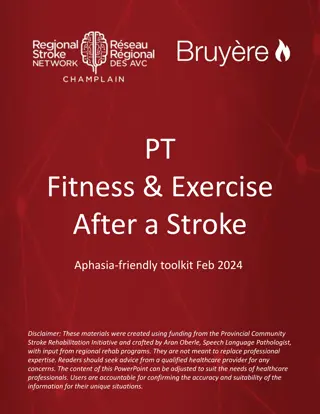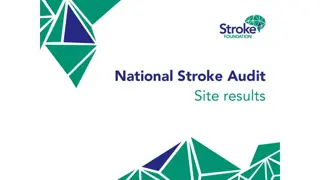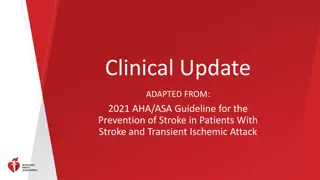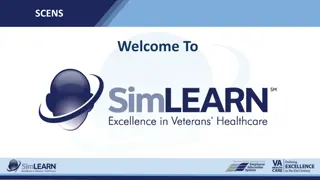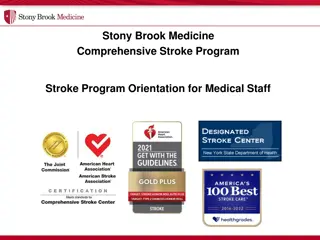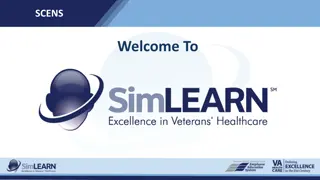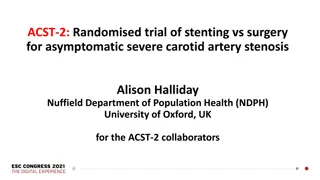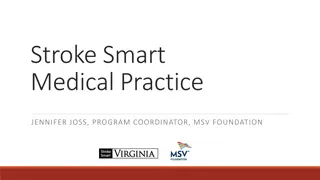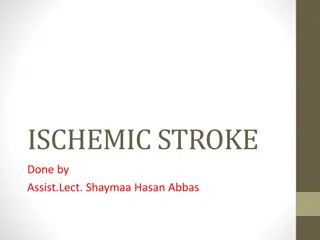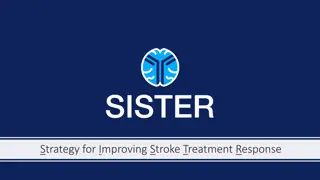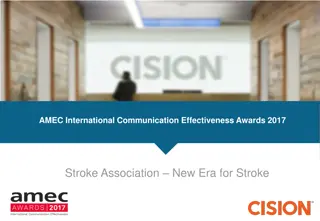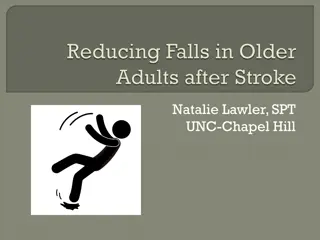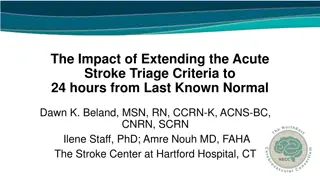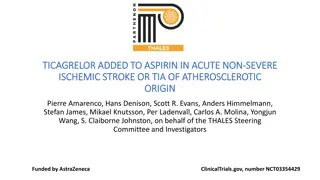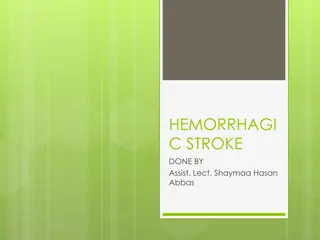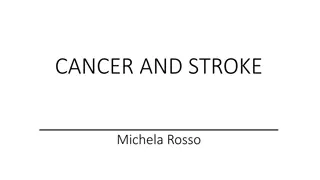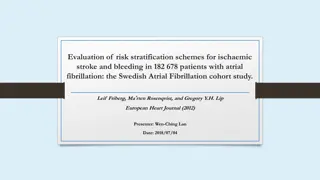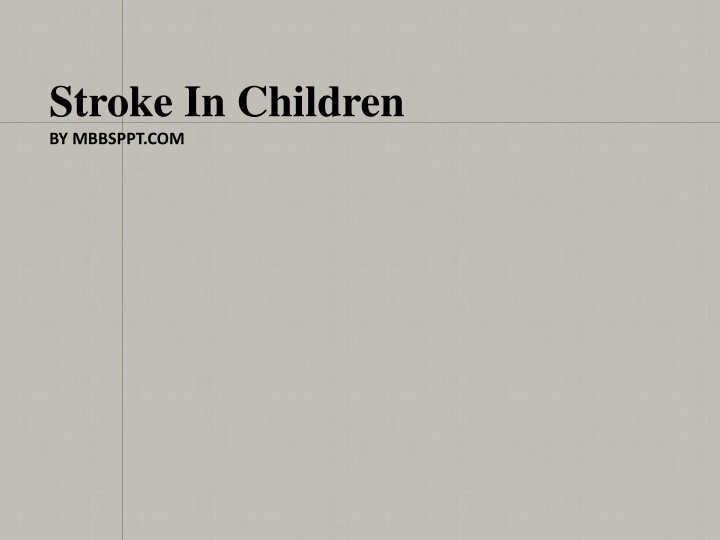
Stroke in Children: Causes, Types, and Risk Factors
Explore the nuances of stroke in children, including the definition, incidence rates, types of stroke, risk factors, and neurological implications. Gain insights into the clinical manifestations, contributing factors, and preventive measures for this critical condition affecting young individuals.
Download Presentation

Please find below an Image/Link to download the presentation.
The content on the website is provided AS IS for your information and personal use only. It may not be sold, licensed, or shared on other websites without obtaining consent from the author. If you encounter any issues during the download, it is possible that the publisher has removed the file from their server.
You are allowed to download the files provided on this website for personal or commercial use, subject to the condition that they are used lawfully. All files are the property of their respective owners.
The content on the website is provided AS IS for your information and personal use only. It may not be sold, licensed, or shared on other websites without obtaining consent from the author.
E N D
Presentation Transcript
Stroke In Children BY MBBSPPT.COM
WHO DEFINITION OF STROCK 2004 A clinical syndrome in which there is rapidly developing signs of focal or global disturbance of cerebral functions, lasting more than 24 hours or leading to death, with no apparent causes other than of vascular origin
Children are not little adults In adult: chronic risk factors In children: 1- congenital and developmental risk factors 2- rare 3-subtle presentation* 4- wide DD 5- no established tt *Among neonates, signs of hemiparesis are generally not seen before the first six months to one year of life
incidence -2.5 3.0 children out of 100,000 affected every year. -Newborn babies can develop a stroke 28/100,000 - More in boys - Nearly half are hgic stroke Neurologic deficits in 2/3 20-30% recurrence risk One of the top ten causes of childhood deaths world wide
Type of Stroke STROKE Acute Ischemic Stroke (AIS) Hemorrhagic Stroke (HS) Cerebral Venous Thrombosis (CVT) Infection Vascular malformations ITP/Hemophilia Dehydration Brain tumors Prothrombotic states
Types of stroke (2) According to time of onset : 1- prenatal 2- perinatal 2- pediatric
Risk Factors for Perinatal & Prenatal Arterial Stroke Infants : Antiprothrombin factors in the mothers, antiphospholipid antibodies : anticardiolipin (aCL) antibodies and lupus anticoagulant (LA).,
Risk Factors for AIS Vascular AIS Embolic Intra-vascular
Vascular Risk Factors Vascular Systemic vascular disease Arteriopathies Vasospastic Vasculitis Transient Infectious Progressive Connective tissue disease Drugs
Embolic Risk Factors Embolic Congenital Heart Disease Acquired Heart Disease Trauma Cyanotic Heart Disease Cardiomyopathy PFO Arrhythmia
Intravascular Risk Factors (The Hematologist s Domain) Intravascular Hematologic Disorders Prothrombotic States Metabolic Hyper Sickle cell Acquired homocysteinemia Iron deficiency Congenital Hyperlipidemia Leukemia
Pathophysiology of Hemorrhage 20 % of strokes are due to intracranial hemorrhage from rupture of intracranial aneurysm. Chacot Bouchard aneurysm occur where hemorrhage is common basal ganglia , thalamus, cerebellum, Pons &sub cortical areas.
COMMONCAUSES OF ACUTE STROKE SYNDROME IN CHILDREN The most common causes are congenital heart disease (cyanotic), sickle cell anemia (SS), meningitis, and hypercoagulable states. The cause of stroke in children is established in approximately 75% of cases
Causes of recurrent hemiplegia CVS- multiple emboli Prothrombotic conditions Protein C , protein S , antithrombin iii defeciency Antiphospholipid antibody Metabolic MELAS Moya moya disease Alternating hemiplagia of childhood
SIGNS & SYMPTOMS Newborns and infants
Children and teenagers Weakness or numbness of the face, arm or leg, usually on one side of the body Trouble walking due to weakness or trouble moving one side of the body, or due to loss of coordination Problems speaking or understanding language, including slurred speech, trouble trying to speak, inability to speak at all, or difficulty in understanding simple directions Severe headache especially with vomiting and sleepiness Trouble seeing clearly in one or both eyes Severe dizziness or loss of coordination that may lead to losing balance or falling New appearance of seizures, especially if affecting one side of the body and followed by paralysis on the side of the seizure activity Combination of progressively worsening non-stop headache, drowsiness and repetitive vomiting, lasting days without relief Complaint of sudden onset of the "worst headache of my life"
Localization of lesion in case of hemiplagia Lesion can be divided into two groups on the basis of cranial nerve palsy as : Cranial N palsy on same side as that of hemiplegia Cranial N palsy on opposite to that of hemiplegia
Cranial N palsy on same side as that of hemiplegia Lesion above the level of brain stem (Ipsilateral hemiplegia) Lesion can be at the level of either :- Cortex Internal capsule Sub cortical region
Cortical lession Hemiparesis or Monoparesis Differential involvement { Upper limb > Lower limbs or vice versa } Altered sensorium Convulsion Cortical sensory loss Aphasia ( If dominant cortex )
Frontal lobe involvement Altered behavior Upper limb > lower limb Motor aphasia Convulsions Bladder & bowel involvement Persistent neonatal reflexes on opposite side
Parietal lobe involvement Cortical sensory loss Astereognosis Hemineglect ( rt parietal involvement) Temporal lobe involvement Temporal lobe epilepsy Sensory aphasia Memory loss Occipital lobe involvement Homonymous hemianopia
Subcortical lesion( corona radiata) Similar to cortical lesion except seizure and loss of cortical sensations Internal capsule lesion Dense hemiplagia Hemianesthesia Homonymous hemianopia Global aphasia Only UMN type cranial n involvement
Cranial N palsy on opposite to that of hemiplegia Lesion at / below the level of brain stem (Contra lateral hemiplegia ) Lesion can be either of : Midbrain Pons Medulla Spinal cord ( b /w C 1 C4 ) Mid brain lesion Weber s syndrome : 3 CN palsy +contra lateral hemiplegia Benedict s syndrome : 3 CN palsy +contra lateral hemiplegia +red nucleus affection( tremor, rigidity & ataxia on opposite side)
Pons lesion Millard Gubbler s syndrome : 7 CN palsy +contra lateral hemiplegia Foville s syndrome: 6 & 7 CN palsy+ contra lateral hemiplegia Medullary lesion Jackson s syndrome : 12 CN palsy + contra lateral hemiplegia
Potential signs Motor Disorder Sensory Reflexes - focal weakness - initial hypotonia then spasticity - Abnormal plantar reflex ( Babinski s)
DD of stroke like events Alternating hemiplegia: Todds paralysis Stroke like episodes: migraine Focal post viral encephalitis, ADAM, HIV hyperlipidemia Familial hemiplegic migraine
History Physical examination Radiological investigation Initial Lab Subsequent Lab
Diagnostic evaluation FIRST LINE: Performed within first 48 hours of admission SECOND LINE: Performed within first week THRID LINE : Performed as per need
FIRST LINE CBC ESR Blood sugar BUN PT/APTT Serum electrolytes ( Na,K,Ca,Mg,Phos.) AST,ALT S / lipid profile Plain x ray chest CT brain MRI brain & MR angiography Ultrasonography ANA ECG
SECOND LINE Echocardiogram (transthoracic) with saline contrast Transcranial and/or carotid dopplers MR angiogram EEG Rheumatoid factor Serum amino acids Urine for organic acids Blood culture Hemoglobin electrophoresis Complement profile VDRL Lactate/pyruvate Ammonia CSF: cell count, protein, glucose, lactate Lipid profile
Hypercoaguable evaluation (Hematology consultation) Antithrombin III Protein C (activity and antigen) Factor V (leiden) mutation Antiphospholipid antibody Anticardiolipin Lupus-anticoagulant
THIRD LINE HIV Lyme titers Mycoplasma titers Cat-scratch titers Cardiac MRI Echocardiogram (transesophageal) Muscle Biopsy DNA testing for MELAS Cerebral angiogram (transfemoral) Leptomeningeal biopsy Serum homocystine after methionine load
General consideration before starting the treatment 1st step is to differentiate ischemic & hemorrhagic stroke. Anticoagulant therapy is contraindicated in hemorrhagic strokes. Hyperglycemia & hypertension worsen the stroke.
Acute care General measures Specific measures Prevention/prophylaxis Recovery after stroke depends on the severity of the stroke and the speed of treatment
MANAGMENT SUPPORTIVE: Airway and respiration managment. Circulation and BP managment. Management of raised ICT Care of the skin Care of nutrition Care of the bladder& bowel Physiotherapy
Therapy Absence of RCT Adapted from adults Treat underlying risk factor Prevent recurrence
Acute care specific medical treatments Aspirin (5 mg/kg/day)* should be given once there is radiological confirmation of arterial ischaemic stroke, except in patients with evidence of intracranial haemorrhage on imaging and those with sickle cell disease - LMWH (1 week) - Warfarin ( for 6 months) *max 300 mg
Consensus on Sickle cell disease Acute therapy Exchange transfusion Preventive therapy Blood transfusion every 3-6 weeks to maintain HbS<30% stem cell transplant Transcranial dopplers
Current recommendations Neonatal AIS no therapy Dissecting vasculopathy anticoagulation 3-6 months ( no aspirin ) Cardiogenic embolism anticoagulation but no consensus on length of time( no aspirin) Vasculopathy ASA (no consensus on dose 1-3mg/kg/day) Recurrent stroke consider anticoagulation
Initial antithrombotic The American Academy of Chest Physicians (ACCP) recommends either unfractionated heparin or low molecular weight heparin (LMWH) or aspirin as initial therapy UPTODATE RECOMENDATION: suggest aspirin 3 to 5 mg/kg per day rather than anticoagulation as initial therapy for most children with acute arterial ischemic stroke of unknown etiology
Rehabilitation therapy Physiotherapy Occupational therapy Psychological therapy
Specific Treatment Surgical repair of fallot s teralogy. Regular phelobotomy would prevent thrombosis in polycythemia. Blood transfusion at frquent interval would prevent furture episodes of stroke in sickle cell anemia. Surgical treatment of A-V malformation & aneurysm Steroids & immunosupressants in autoimmune disorders.
DISABILITY Despite the neural plasticity present in children, the majority of children with stroke have persistent disability RECURRENCY Recurrent cerebral ischemia, including stroke and TIA, is common ranging from 6.6 to 20 percent
PREVENTION the American College of Chest Physician (ACCP) guideline for antithrombotic therapy in children recommends daily aspirin (1 to 5 mg/kg daily) for a minimum of two years NO GUIDELINE supprt use of adding with asprin clopedogril.
Stroke recurrence Stroke Guidelines 1- Aspirin Patients with cerebral arteriopathy other than arterial dissection or moyamoya syndrome or those with sickle cell disease should be treated with aspirin (1 3 mg/kg/day) Stroke recurrence prevention 2- Anticoagulation should be considered: 1- until there is evidence of vessel healing, or for a maximum of six months, in patients with arterial dissection 2- if there is recurrence of arterial ischaemic stroke despite treatment with aspirin 3- in children with cardiac sources of embolism, following discussion with the cardiologist managing the patient 4- until there is evidence of recanalisation or for a maximum of six months after cerebral venous sinus thrombosis
STROK IN NEONATES Stroke is more common in the newborn period than at any other time in childhood and carries the risk of significant long-term neurodevelopmental morbidity. acutely in the neonatal period later when the child develops a hemiparesis or symptomatic epilepsy syndrome
CAUSES congenital heart disease placental pathology Thrombophilia INVESTIGATION OF CHOICE MRI Wayne State University, School of Medicine, Detroit, MI, USA
Outcomes of Childhood Stroke Hemiparesis, speech, learning and behavior WORSE IF .. Multiple risk factors CHD/progressive vasculopathy Larger infarct Stroke after neonatal period Seizures with stroke neurological deficit persists more than 1 month Hemorrhagic stroke Cortical involvement


